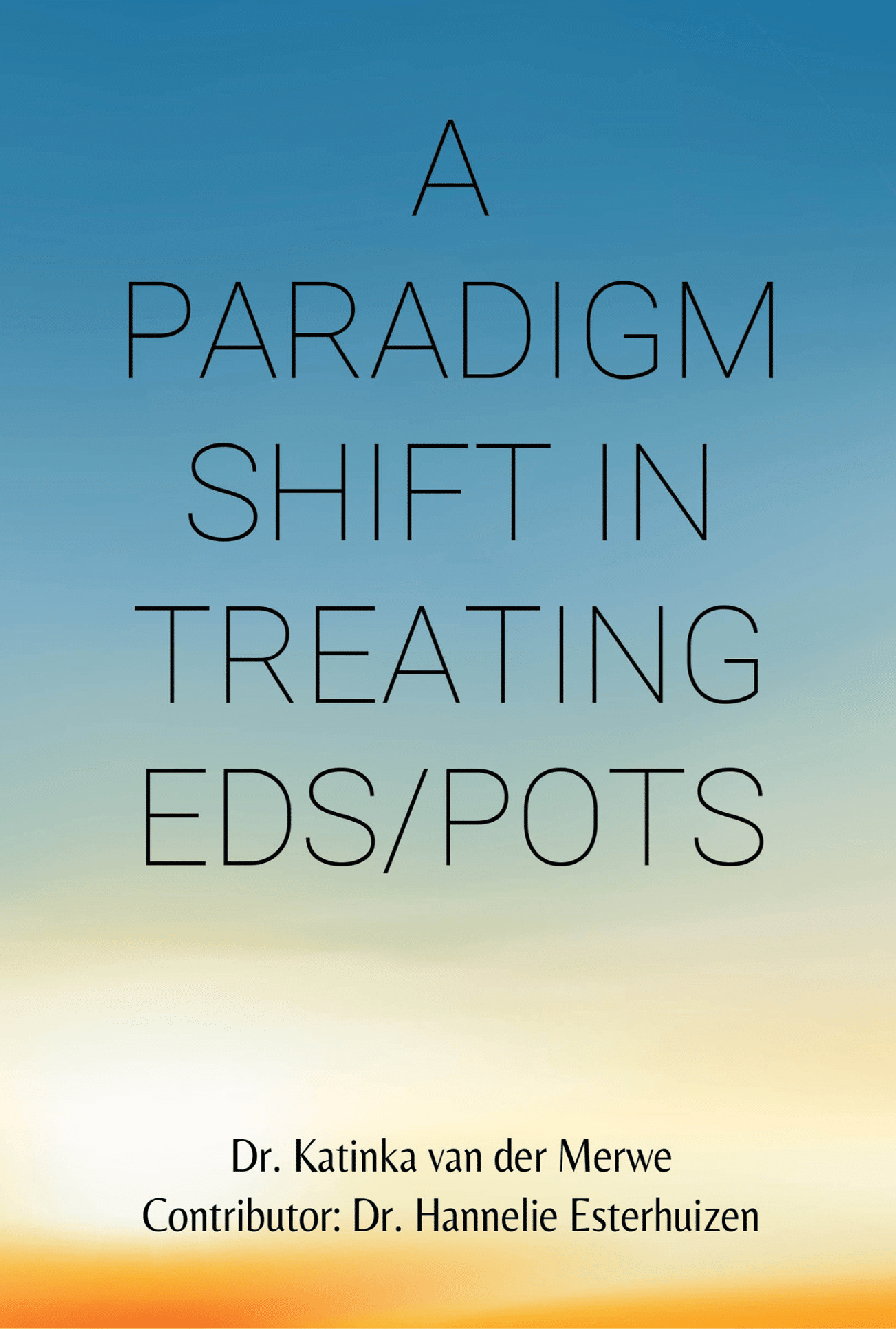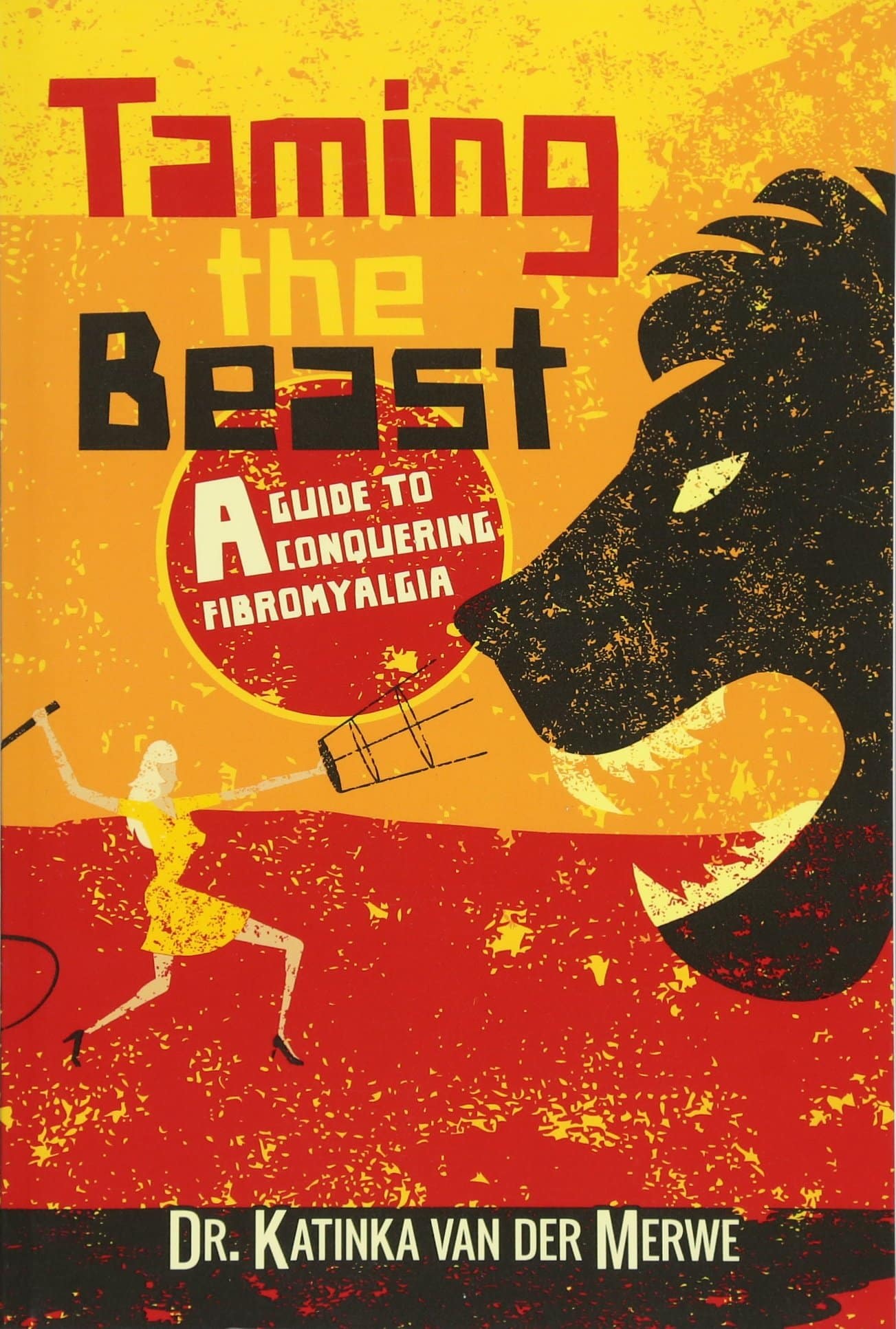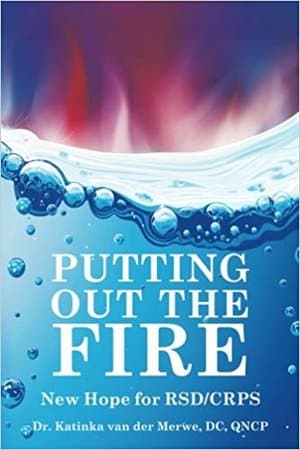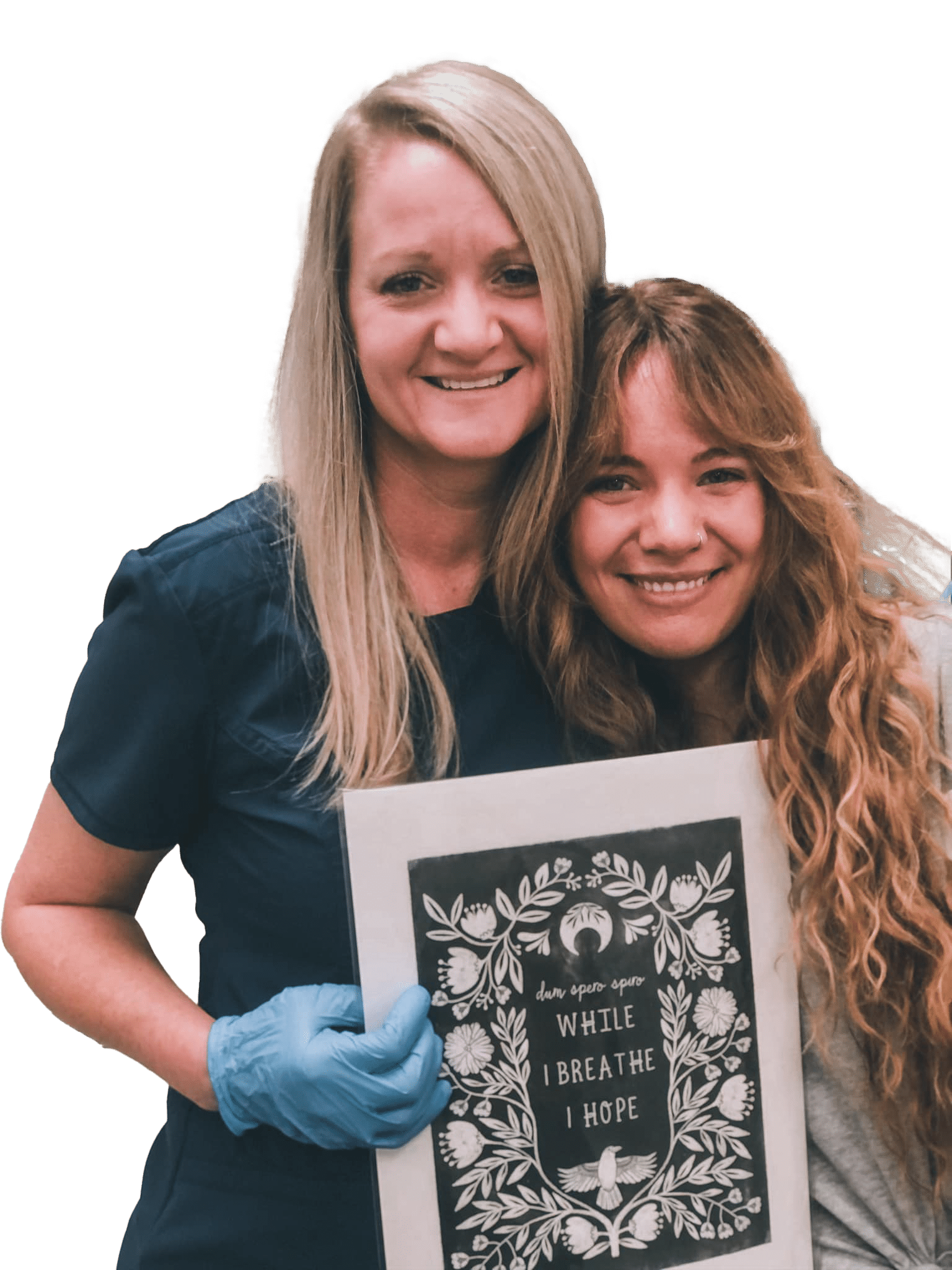[00:001] I am very excited about today’s topic and I’m very passionate about today’s topic, which is the medical fallacy of treating chronic pain. I was raised by a chiropractic father whose life was saved by a chiropractor when he was seven years old. And so, his philosophy in the body’s ability to heal itself was very strong. And growing up, I didn’t see medical doctors very often. I didn’t take painkillers very often. That was just my world. And it’s a very natural philosophy for me. Now, people are always very surprised that we have this clinic where we treat patients from all over the world with chronic diseases who are suicidal and at the end of their rope, and they have Ehlers-Danlos syndrome and Complex Regional Pain Syndrome and neurologic pain. And they have been everywhere in the world to the best clinics, the smallest clinics, Cleveland Clinic, CHOP, Mayo Clinic, and yet they haven’t been able to find answers. And so, something I face a lot is people saying, but you’re a chiropractor. And I want to explain that the fact that I’m a chiropractor is a big chunk of why we are so good at what we do, because chiropractic philosophy has taught me how to understand the body and respect the body’s ability to heal from within. Now, today’s podcast is not about bashing medicine, and I want to make that clear. Medicine has a very clear and concise place in health care, but it is my belief and philosophy that medicine best serves us when it comes to emergency care.
If you need a new heart, if you need emergency surgery, if you’re in a car accident, if you had a fracture. In many ways, medicine serves us very well. My niece, who is 13 now, had open heart surgery when she was just three weeks old and weighed less than five pounds. It is mind blowing to me that they could go in through her thoracic area between the ribs to minimize scarring and do major heart surgery on such a tiny body. And she wouldn’t have had the ability to be alive today if it weren’t for the surgeons who worked on her and the science that got them to where they are. But when it comes to conditions where daily chronic pain is your reality, I am here to tell you today that the medical world is not the best place for you to find answers. This may go against everything you were taught. So, let me explain. The chiropractic philosophy is all about how our bodies were masterfully designed. If you ask any member of the public, they will tell you that chiropractors pop backs and necks. And it’s true, a lot of chiropractors do that. But what really makes our profession distinct is this belief that the body was designed to heal itself if the central nervous system and the brain are allowed to do their job. We believe that the body is capable of healing even the most catastrophic injuries and conditions.
[00:04:49] If it’s able to function correctly, the body heals from the inside out, not the outside in. 12 years ago, one of my patients fell down a six-foot ladder. His name was Tommy Van Zandt. He’s a very dynamic individual. And even though he’s in a wheelchair today and a quadriplegic, he is still working in commercial realty and he’s very successful. He’s a very driven individual. But at the time I was called to his hospital bed in ICU here in Fayetteville, Arkansas, and I stood next to that man’s hospital bed and I understood how powerless I was against this injury, how powerless I was to help him. And that was a turning point for me in my career. I never wanted to feel like that again. And I wanted to take patients like Tommy – not with his injury, but patients who suffer from Complex Regional Pain Syndrome and who go on Google when they receive their diagnosis, and they are told by the world, by the medical profession, by their doctors that there is no hope for them, that besides pain management, this is the rest of their life. So I made it my job, I made it my career to understand chronic pain and how the body heals, and we are seeing massive success in our clinic here in Arkansas in cases where everything else has failed. And I’m hoping today that I can explain some of the thinking and the philosophy that will lead you in the right direction.
If you suffer from chronic pain, you have seen dozens, if not hundreds of doctors. You’ve been maybe to some of the best clinics in the world and you’ve been offered the standard choices, which are opioids, pain management, spinal cord stimulators. But before you go that route, you need a better understanding of how your body is capable of healing you if given the correct support. So, let’s talk about the medical approach or what I call the medical fallacy, when it comes to chronic pain. The medical philosophy is very clear on how we heal or don’t heal. Medicine believes that the body makes mistakes. It’s not perfect. It’s flawed. And science is more intelligent than your innate intelligence. And what I mean by innate intelligence – every living creature has an inborn intelligence that was there the moment you were created. No matter what your beliefs are or what your religion is, or if you don’t believe – you have to know that something very intelligent was there the moment you were made from an egg and sperm cell, two cells, and then within nine months you were created into this incredibly intelligent organism with two eyes and a heart and hair that grows, and nails that grow, and cuts that can heal. The intelligence that went into that process is magnificent. However, medicine believes that science makes the body better, that it needs help from the outside, that your immune system isn’t strong enough. It needs science to boost it. That pain is a mistake to be numbed or suppressed. That we’re not supposed to have pain.
[00:08:32] And it also believes that the patient’s diagnosis is crucial. It’s crucial because it determines how the medical world should intervene chemically or surgically to fix your body from the outside in. Let’s talk about chronic pain in the U.S. and in the world. Worldwide, 1.5 billion people suffer from chronic pain. 1.5 billion people – wrap your mind around that. One study analyzed 95 suicide notes from random people and found that 67 of those notes listed chronic pain as the reason for choosing suicide. The USA uses more than 50% of the world’s prescription drugs today. And every day, 130 Americans die from prescription overdose. Nearly 70% of those prescription overdoses involve opioids. Opioids do provide relief by blocking pain, but then your body gets to the point where it reacts to the pharmaceutical intervention, to the chemicals we’re loading into it every day, by increasing the number of receptors to try to get the pain signal through again. Your body is crying out. It’s like a baby that’s crying for attention because it has a wet diaper or because it’s hungry or uncomfortable. It’s crying out because it needs attention, it needs help. And when you take a painkiller, it’s as if you have a fire alarm that’s going off. But it’s annoying and unbearable. And so, you take a wet towel and you put it over the fire alarm so that you can’t hear it anymore. Somewhere a fire is raging. Your body is trying to communicate something to you. Pain is also a signal to the brain and the nervous system that a body part needs attention, it needs healing.
[00:10:32] And when we numb that, the body is going to counteract that by trying to get that signal through. I always say that medicine has a ceiling. You know, there are levels of medicine that we can safely take without overdosing and dying. But pain has no ceiling. So, when the drug that you’re taking wears off, a person will experience more pain for about three days afterwards. And if they continue to take opioids, the pills become less and less effective over time. I’ve noticed that many of my patients have actually reported this in practice. So, let’s look at how many prescription medications Americans take. In 1997, Americans took about two and a half billion prescriptions every year. In 2016, that number increased to four and a half billion prescriptions. What that means is that the total number of prescriptions filled by all Americans, including adults and children, has increased by 85 percent over two decades, while the total U.S. population has increased by only 21 percent. Wrap your mind around those numbers. What is going on? If you turn your television on, if you go to your doctor, you’re going to see ads for medications. As Americans, we now believe that we cannot gracefully or naturally age without taking one, two, three, four prescription medications. That is considered normal in the USA. And I’m here to tell you that there is no medication without side effects. It does not exist.
[00:12:24] If you take a medication, you’re going to pay a price to some extent for putting that chemical into your body on a daily basis.
[00:12:34] In 2011, a special panel was assembled to compare the health of U.S. citizens to the health of citizens of peer countries. Now, peer countries are countries similar in socioeconomic development such as Sweden, Great Britain, Germany and other European countries. We would think that because we have so many hospitals in the U.S. and so many doctors and so many pharmaceutical companies and the FDA, that we’re one of the healthiest countries in the developed world. But shockingly, this study found that the US fared worse in conditions like diabetes, like heart disease, disability and life expectancy. So, we didn’t do so well. That means that we have more doctors and fill more prescriptions, more research, more hospitals. We have the Cleveland Clinic, we have Mayo Clinic. Yet we are lagging in health and lagging in life expectancy. If you suffer from chronic pain, you’ve probably heard about ketamine. Ketamine is a dissociative drug first used in animal medicine, specifically for horses that, in a practical level, disconnects the central nervous system from what the body is feeling so that you’re disassociating with your pain. And it is one of the first line of defenses for conditions like Complex Regional Pain Syndrome and many other chronic pain conditions. But ketamine tolerance has been proven by science to quickly build in the human body. In addition, long term use of ketamine can damage the digestive and urinary tracts, and it puts an unhealthy amount of strain on the liver and your kidneys to the point of damaging those receptive organs.
[00:14:30] The journal Addiction noted that long term use of ketamine exposes patients to ulcerative cystitis. That literally means that you get holes in the bladder wall. Ulcers. And the researchers also noted that people who use ketamine on a daily basis demonstrated neuro cognitive impairment, meaning it changes the way your brain thinks. It also showed that patients who took ketamine struggled with memory problems, a point also made in a journal called Frontiersmen Psychology, which noted that long term ketamine use can specifically damage memory and understanding of geographical areas, even something as small as the layout of your own house, remembering where the bathroom is or where your bedroom is. To me, that is a petrifying thought. Anything that can change my mind or who I was meant to be or my cognitive function, I don’t want near my body. On that note, drug and alcohol dependence found that repeated use of ketamine produces chronic impairments to episodic memory. Research has also revealed that recreational ketamine abuse damages the bladder irrevocably. In two studies, medical researchers showed that ketamine present in urine causes damage to epithelial lining of the bladder, allowing urine to penetrate into the underlying tissues, which causes inflammation and extreme pain in the bladder, which is something we see very commonly in our patient population – bladder issues, chronic urinary tract infections.
[00:16:17] When patients are tested for urinary tract infections, they cannot find anything wrong. In some cases, this pain can be so extreme that patients need to have their bladder removed permanently. You know, there is a quote by B.J. Palmer, who some say is the father of chiropractic that says, “Have you more faith in a spoonful of medicine than in the power that animates the living world?” For too long, we have placed our faith in hope of healing purely in the hands of pharmaceutical companies. But pharmaceutical companies don’t care about you. They don’t care about your health. They care about their bottom line. They care about profit. And that’s a fact. Speaking of profits, we cannot neglect to mention spinal cord stimulators. Let’s look at some of the recognized side effects of spinal cord stimulators. Biologic complications include infection following the implantation, neurologic injury, epidural hematoma, skin erosion, epidural fibrosis, Dural puncture, pain, allergic reactions to the device. But the most significant biologic complication results from actually implanting the device into your body. The leads go right next to your spinal cord, and we have seen significant scarring as a result of those leads. In most cases, the scarring is so severe that the lead cannot safely be removed. Medical devices comprise a 400-billion-dollar industry in the US. A worldwide investigation by the International Consortium of Investigative Journalists involving 250 journalists from 36 countries was published in 2018.
[00:18:09] Now, you may not have heard of this study, but if you’re thinking about getting a spinal cord stimulator, you sure need to know about it. Investigators interviewed patients and doctors and whistleblowers. They pored over millions of records and recall notices. They found at 1.7 million injuries and 83000 deaths were attributed to these devices. Spinal cord stimulators were among the chief culprits, having faced 50 recalls since 2005. The FDA, who was supposed to protect us, is using an outdated system where devices are rushed through after minimal studies and human trials. These devices were meant to be a last resort. Listen to that very closely. A last resort – meaning that shouldn’t be mentioned to a chronic pain patient within the first six months of diagnosis or even the first year. This was meant to be used when all else failed because it is dangerous. It should be brought onto the table after every other option has been exhausted. But instead, big money has been spent on lobbyists and physician promotion. And today, 160 spinal cord stimulators are being implanted every day in the U.S. alone. Rusty Eric said that “As long as greed is stronger than compassion, there will always be suffering.” And that is certainly true for the chronic pain population.
[00:19:46] Chronic pain patients represent a massive economic gain to pharmaceutical companies and the companies that implant spinal cord stimulators. You guys, and this is the truth, are cash cows for these industries. And they are not interested in getting you out of pain. They’re interested in making money. Remember, the body was designed magnificently. B.J. Palmer also said, “the master of your body did not run off and leave you without a master.” You cannot mask symptoms. You cannot treat the body by dividing it into different parts, like a car engine. I knew from when I was very little that I wanted my life to matter and to make a difference to others. And I knew that I had found my purpose when I treated my first Complex Regional Pain Syndrome patient, and he went into remission. I don’t care how busy I get or how many clinics I have, I always bring my message to the masses. Such is the message that I’m giving you today. Because I’ve seen healing in the worst of cases when there was no hope left. And I know that collectively, we have been misled by the media, by advertising, by the pharmaceutical industry, and by doctors trained in medical schools, funded by the pharmaceutical industry – not to mention having their pockets lined by the same industry while in practice. Am I saying that every doctor is evil or only cares about money? No. A lot of doctors are actually salaried, and they became a doctor by going through medical school and having massive student loans, and because they cared about people – they wanted to make a difference. But they moved into a philosophy and a world that is driven by profits. And those are the people who are teaching them. Those are the people that decide what curriculum they’re exposed to in their medical schools. Those are the pharmaceutical reps that visit them in practice. That is what they have been taught. And it is all that they know. You can only look around right now at COVID, for instance. We are all told that we should wear masks and social distance. But how often on major news outlets do you see advice about improving your immune system? Taking vitamin D, taking zinc on a daily basis, walking around outside barefooted, taking care of your immune system, which is really the strongest defense? It is not the philosophy of the medical world to focus on prevention. Our system is corrupt, and you guys are suffering as a result. So how do we support the body so that it can heal from within? While other professions are concerned with changing the environment to suit the weakened body, we’re concerned with strengthening the body to suit the environment. When we treat a patient, our goal is not simply to get them out of pain. Our goal is to figure out why this patient started suffering from chronic pain in the first place. Where did the body go wrong? What started interfering with this magnificent body and its ability to thrive? And when you get to the bottom of that equation, then you have to strengthen the patient. You have to make sure that the patient doesn’t make the same mistakes in the future.
Our system is very focused on treating the body as a whole organism. I cannot say this enough. If you move through the medical world, you’re sent from specialist to specialist. So, let’s say you have severe chronic pain in your spine, but you also have GI dysfunction. It is very rare in the medical world for doctors to say maybe one thing is connected to the other. And the same underlying problem is causing both of these symptoms. So, let’s look at the body as a whole and figure out where did it all go wrong? If you go to a doctor that’s treating your body is a car engine where you can take out one part, take out the gallbladder and it’s going to work better, you know, give a certain medication to fix one thing and it’s not going to affect anything else. That is a flawed way of thinking. You have to understand that if you have scar tissue in the upper body, it may affect how well the lower body is healing.
[00:24:41] You’re treating the body as one thing where every single cell affects every single other cell. You have to find the root cause and support the body in healing from within. And to that end, you need a multidisciplinary center, all with the same goal: Removing interference to healing, strengthening the central nervous system. Why the central nervous system? Because your brain and spinal cord and nervous system governs all other healing in your body. It tells your immune system when to act. It tells your body when to attack scar tissue and break it down and remove it. It tells your body when to heal. It decides what is most important in order to heal. What do I heal first? A heart problem that could kill me today, or gout in my toe that’s not going to kill me today, even though I’m feeling that more than I’m feeling the heart problem. You also have to create a loving, healing environment for patients. I think one of the fallacies of medicine today is that it’s isolating. It takes the patient and treats the patient as a science project, not as a human being sitting in front of the doctor who has stress at home, who has a certain diet that may be good or bad, who is sitting there with emotional stress and post-traumatic stress disorder from events that happened in the past.
[00:26:21] And that is preventing the brain from focusing on healing because it is distracted by old emotional stress. You have to know what motivates your patient. Do they have children? Do they have grandchildren they cannot hold anymore? Do they love playing golf? Do they feel free when they’re on the golf course, and that’s where they feel that they’re reconnecting with their soul? What is motivating the patient to want to get their life back? You have to love your patient. It is a science that has been forgotten in medicine. We’re taught not to emotionally connect with our patients because it’s hard on the doctor. And I agree with that. There is a component of that. But it is possible to have sympathy with the patient, even if you don’t feel empathy with the patient and put yourself physically in their shoes to the point where you take that home at night. If you’re a physician, you have to have skin in the game. You have to care about the patient in front of you. In our waiting room, we have opened our waiting areas so that our patients can support each other, celebrate each other’s successes. And I pick my staff for their passion, not for their skills. We teach them their skills. Healing is an art. It takes time, it takes practice, it takes love. It doesn’t come from a device. It doesn’t come out of a bottle.
[00:26:21] I have one last quote I want to leave you with by Albert Camus. “In the depths of winter, I finally learned that within me, there lay an Invincible Summer.” Your body is incredible. It was magnificently designed. Please remember that. Hold on to your hope and know that you are not supposed to give up today. Look at your body in a different way. Start looking for your own answers. Be your own best advocate and fight for yourself.




Start your patient journey with the Spero Clinic's neurologic rehabilitation program.
